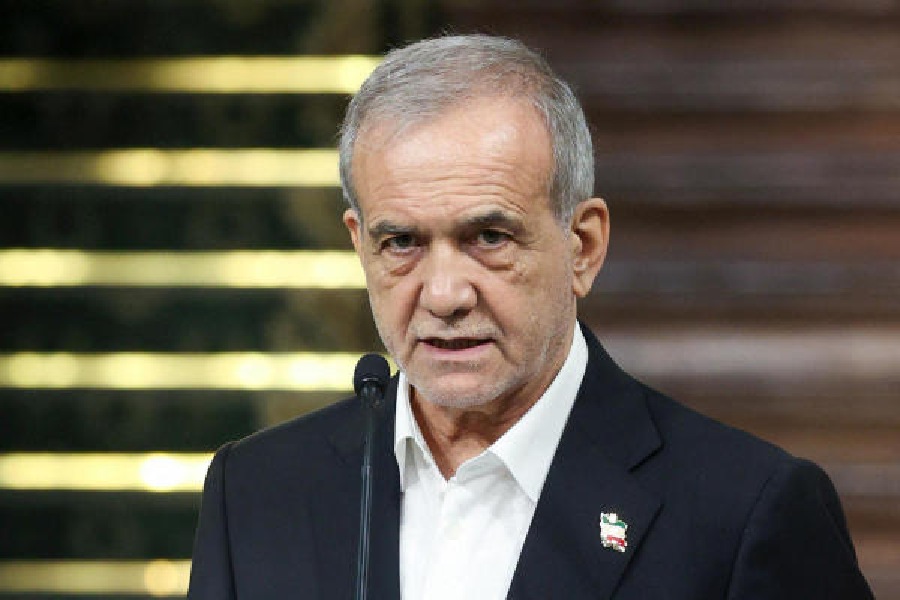Eminent litterateur J.P. Das, in an article in The Telegraph, has called for the renaming of Ravenshaw University.
His argument is that it is a colonial legacy and that Ravenshaw, after whom the college, now a university, has been named, was a discredited commissioner of Orissa division and was castigated by the famine commission for mishandling the great Orissa Famine of 1865-66 in which nearly a million people died.
I wish to deal with the subject on two premises to enable the reader to judge whether these views are valid and informed - Ravenshaw, the promoter of higher education in Orissa and Ravenshaw, as an administrator handling the famine.
From 1805, when Orissa became part of the British empire, till the early 1860s, little was done for the spread of Western education thanks to the White man's contempt and the Bengali apathy. By 1868, there were 63 schools and 4,073 students. One of the priority areas of Ravenshaw was to promote education of the Odias. By 1875, i.e. 10 years into his commissionership, the number had gone up to 539 schools with 10,196 students. What is significant was Ravenshaw's comprehensive perspective that included education for girls, training Odia teachers who were in short supply and starting a medical institution.
Yet another facet of Ravenshaw that has been overshadowed by the Odisha intelligentsia's perception of Beams as saviour of the Odia language, which no doubt is true, was his relentless effort to introduce Odia as the medium of instruction in the schools. Schools were opening and the Bengal government made Bengali the medium of instruction on the ground that Odia textbooks and teachers were not available. Inspector of schools R.L. Martin wrote in 1868: "It would require another 20 years for a Vidyasagar to develop Oorya."
To this Ravenshaw spiritedly replied: "There will be, if option is permitted a constant leaning towards Bengalee, which will be detrimental to the fundamental point to be kept in view viz the education of Ooryas. So long as Oorya is not recognised as the language of all and every grade of Oorya schools, it is not to be expected that very material improvement be made in Oorya literature. This being once decided on, books will be translated from Bengalee and new works in Oorya prepared and time need not be long before the language will be as rich in literature a in Bengalee. I would leave Bengalee as an extra language if preferred to be taken up in addition to Oorya, but in no case in supercession of it. The Bengalees have usurped the lucrative employment in the country which would have fallen to the indigenous Ooryas had they been afforded an opportunity of advanced education in their own language. So far the Ooryas have not received fair play and have been kept in the background. I think nothing is so likely to encourage the progress of education in Orissa as adoption of its national language in all classes of schools."
Sensing the unhelpful attitude of Martin who was duly supported by the DPI, he sent a proposal to the Bengal government for creation of a separate inspectorate for Orissa that the DPI delayed in spite of support from the secretary. The assistant secretary of education wrote in 1873 that Bengali could be replaced by Odia. Ravenshaw promptly wrote to the collectors: "Persistent and potent exclusion of the Bengalee language and of teachers who are not familiar with Oorya vernacular is expected for the popularity and progress of education in Orissa".
He also introduced FA class in the Cuttack Zila School and subsequently the Cuttack College the first college in Orissa. Thus his contribution to promotion of Western education in Odisha will remain above any doubt and question.
Now let's talk about Ravenshaw's handling of Odisha's famine for which all blame is laid at his door.
Ravenshaw succeeded R.N. Shore as commissioner of the Orissa division in July 1865. By then, the monsoon was failing and the collectors, particularly Puri collector Barlow, had sent their reports to Ravenshaw, who in turn, had sent warning letters to the Bengal governor and the board of revenue, which was supreme in matters of revenue administration. The board ignored the letters on the ground that the market would take care of the situation and that the traders and the people must have stored sufficient rice. Governor Sir Cecil Beadon, duly briefed by the board, remained silent. By the end of the year, people were dying by the hundreds and reports were pouring in. Barlow reported that the crop would not be 1/8th of the normal produce in Puri. He also reported to Ravenshaw about the representation of the landlords for remission of land rent seeking his permission to investigate which Ravenshaw gave and kept the board informed. He was reprimanded by the board for giving such permission and was asked to withdraw it. Ravenshaw complied with the order. Sir Cecil, perhaps realising that the board's assessment was incorrect, visited Orissa in February 1866. Strangely, he did not find anything wrong, returned to Calcutta and then to the cooler climes of Simla. In 1866, the situation worsened in Balasore. Ravenshaw wrote that food was the real need.
The government finally realised the gravity of the situation and arranged to import 10,000 tons of rice from Burma. In 1866 there were heavy floods that completely dislocated the poor communication facilities. Food did not reach the destinations. Cholera broke out and the famished died without count. The efforts of Ravenshaw to form a Famine Relief Fund were initially cold shouldered by the governor and the board.
The famine, which a section of the British press described as "the most important and calamitous event after the Sepoy Mutiny" exposing the "moral and intellectual incapacity" of the British administration and compelled Her Majesty's government to constitute a commission to look into all aspects of the matter.
The commission noted that commissioner Ravenshaw described the calamity in the frankest manner. The commission did not put the entire blame on Ravenshaw but questioned the role played by the governor and the board of revenue. After the discussion of the report in the House of Commons, Sir Stafford Northcote, secretary, India affairs, in his report to the governor general, distributed the blame on the governor, the board of revenue and also the governor general stating that the visit of governor Cecil Beadon "should have inaugurated a more effective system of action".
In view of the above, it would be a travesty of truth to conclude that Ravenshaw was castigated by the commission and the Imperial Government.
Lastly, we come to the issue of changing the name Ravenshaw because of its colonial tag. History shows that Orissa and Ravenshaw were one in the twentieth century.
Each grew with the other. Several momentous developments, including the carving of Orissa out of the Bengal Presidency in 1936 as a separate province on a linguistic basis had their roots in Ravenshaw.
It is inconceivable for the millions of Ravenshavians to be stripped of that hallowed identity at a time when Ravenshaw is desperate to regain its past glory. It will be more rewarding and satisfying to meet that challenge than debating an inconsequential proposition like changing the name.











